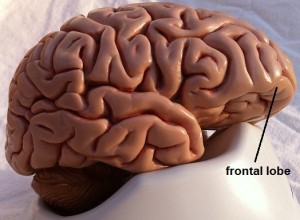How is the Brain’s Social Pathway Different with ASD?
 Whereas neuronal theories are designed to explain autism at the cellular level, brain circuitry theories aim to describe autism at the behavioral level. One well-supported brain circuitry theory is that of reduced frontal lobe connectivity.
Whereas neuronal theories are designed to explain autism at the cellular level, brain circuitry theories aim to describe autism at the behavioral level. One well-supported brain circuitry theory is that of reduced frontal lobe connectivity.
An early study showed reduced connectivity between the frontal lobes (also known as the frontal cortex, which includes the prefrontal cortex) and parts of the limbic system.1 The frontal lobes play important roles in language, social behavior, complex thinking, and emotion. This part of the cortex, like other cortical areas, is made up of small vertical columns in which the main neurons, called pyramidal cells (because they have cell bodies shaped like pyramids!), “talk” to one another as well as to local neurons called interneurons. These “minicolumns” provide the functional building blocks of information processing in the cortex.
In people with Autism Spectrum Disorder (ASD), the minicolumns are less connected to other parts of the brain. They are much bigger, suggesting increased talk within the columns. Additionally, the pyramidal cells from each column are also less connected to other parts of the brain.
Recent magnetic resonance imaging studies of people with ASD, coupled with anatomical observations of postmortem brains, confirm that the frontal lobe has fewer connections to and from other parts of the brain.2 People with ASD show correspondingly less activity in the frontal lobe in response to various stimuli and tasks, including language, attention, and memory.
| References: |
|

